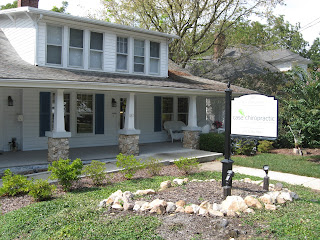Here are a few examples of amazing reuse in NC. Got a few of your own? Post them in the comments section so we can all learn from each other!
Coon High School, Wilson NC
Sitting in the heart of Wilson's Historic Downtown, this project revitalized a former high school into a senior living facility with 57 living units. A school from 1923-1958, the building was abandoned and left in disrepair. By 1999, the building was severely dilapidated and targeted for demolition. Through a combination of financing tools and some hard work, the project was completed in 2003. The project didn't stop there - a $1.75 million Revitalization Strategies Grant allowed the city to help revitalize the surrounding neighborhood, including conversion of a brownfield across the street into an urban park.
Before:

After:
Public Private Partnership
- Financed through a combination of tools:
- Low Income Tax Credits
- Historic Preservation Tax Credits
- Federal and State Grants
- CDBG funding used to address environmental issues such as asbestos and lead based paint.
- Used $1.75 million in federal funds (Revitalization Strategies Grant) to deal with housing conditions in the neighborhood.
- Money used to rehabilitate and, when necessary, demolish deteriorated housing
- Offered home ownership incentives to convert rentals to owner-occupied units
- 5 year initiative with $350,000 per year
A formal industrial complex is now an arts center, children's museum and science center, theater, and rental facility. Funding was provided in part through New Market Tax Credits, Historic Preservation Tax Credits, IMLS (Institute of Museum and Library Services) grant, and a permanent loan/bond.
Before:
After:
Another historic downtown project: The former Clayton Elementary School, established in 1926, was closed in 1996. It was later renovated and completed in 2003 at a cost of about $8.3 million. The complex now includes municipal buildings, conference areas, and an auditorium that has an annual show lineup bringing people from all over the region to Downtown Clayton.
The project was funded through a private-public partnership between Clayton and the Clayton Cultural Arts Foundation in addition to grants from various sources.
Before:
After:













